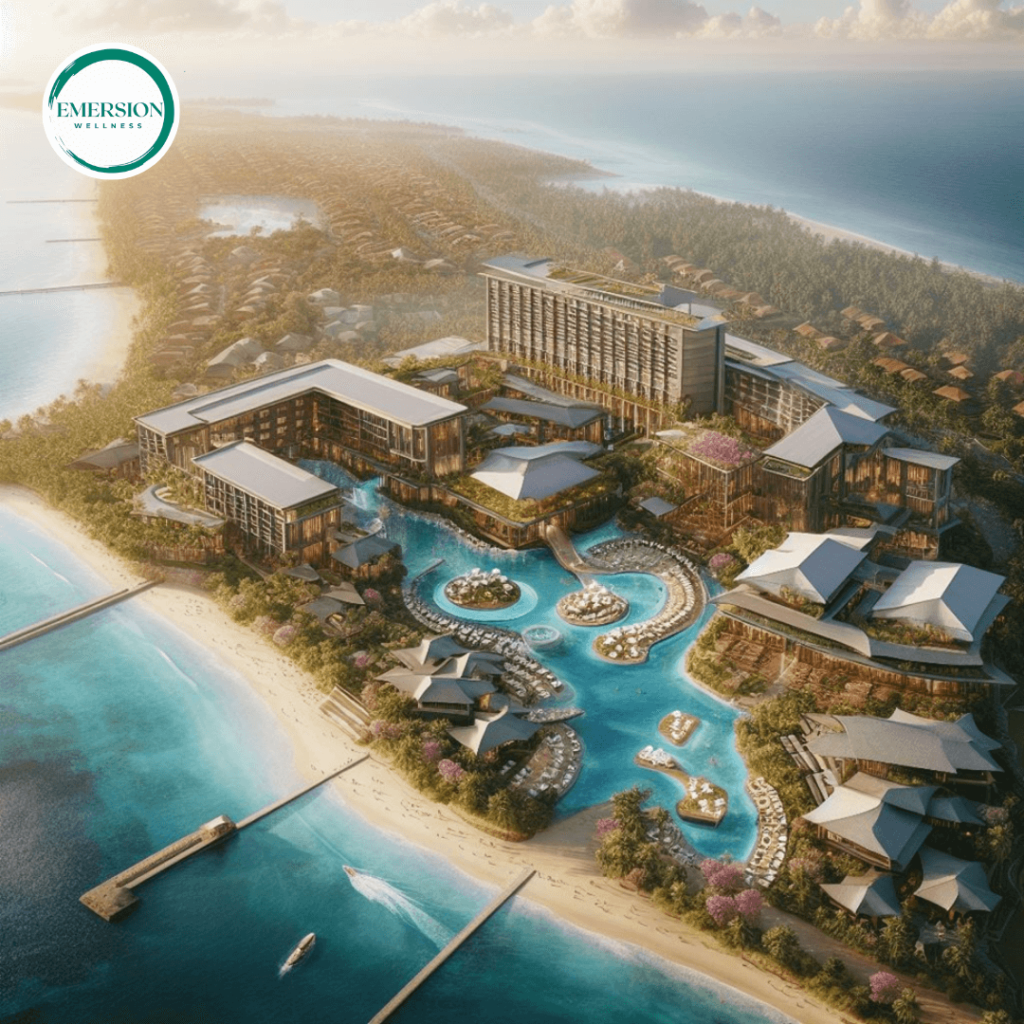Bali's stunning tropics and rich culture lure over 6 million tourists annually, making it one of the world's most famous luxury destinations. This fuels intense competition among the island's 150+ 5-star hotels fighting for discerning guests. With so many polished options, standing out to attract and retain high-paying travelers is paramount. But what profit margins can 5-star hotels expect? How do savvy owners maximize returns in this fierce marketplace?
This article analyzes the key drivers of profitability for Bali's luxury tier. You will gain an insider perspective on optimizing revenue management and controlling costs for sustainable success. The guidance empowers hoteliers to benchmark performance, seize opportunities, and deliver remarkable experiences that foster guest loyalty. Let's delve into the numbers behind running a thriving 5-star hotel in paradise.
Table of Contents
Key Takeaways:
- Location, amenities, and service levels dictate room rates and profit potential
- Target 65-75% occupancy with dynamic pricing to maximize RevPAR
- Control costs with preventative maintenance, energy efficiency
- Build repeat guest business through loyalty programs
- Utilize revenue management technology and expertise
Setting Room Rates and Profit Goals in 5 Star Hotel
A 5-star hotel's profit margin largely depends on the revenue side of the ledger. Location, amenities, and service standards dictate room rates and the property's earnings potential. Beachfront locales command premium pricing, while inland hotels may compete more on style and facilities.
Top urban properties like Hotel Indigo Bali and Andaz Bali charge $300+ per night for luxury accommodations and services. Ubud or Nusa Dua resorts like Viceroy or The Mulia attract similar rates with lavish pools, spas, restaurants, and grounds.
To set profit goals, analyze competitors' rates and occupancy data using STR reports. This reveals benchmarks to inform pricing strategy and RevPAR targets. Generally target 65-75% occupancy at optimal ADRs to maximize revenue.
Managing Operating Costs in 5 Star Hotel
The other profit lever is carefully controlling expenses without compromising the 5-star experience. Essential costs are labor, utilities, maintenance, and marketing. Strategies like preventative facilities management and energy efficiency initiatives optimize spending—and train staff to yield guest satisfaction at efficient service levels.
World-class revenue management technology also boosts efficiency. Systems like IDeaS provide deep performance insights to maximize occupancy and ADR. Consultants like Emersion Wellness offer revenue expertise tailored to your property.
Bali's low labor costs help offset operating expenses. But waste and inefficiency quickly erode profits. Maintain rigorous budget oversight without sacrificing quality.
Labor Cost Optimization in 5 Star Hotel
With luxury service standards, labor remains a top expenditure. Optimize schedules to align staff levels with occupancy patterns—Cross-train employees to play multiple roles. Hire locally at competitive wages to reduce turnover costs. Incentivize employees with revenue-based bonuses.

Preventative Facilities Management in 5 Star Hotel
Proactive maintenance prevents significant repair costs down the road. To uphold standards, perform scheduled upkeep of all equipment, décor, and amenities. Invest in engineering automation technology.
Building Repeat Guest Business in 5 Star Hotel
The most profitable hotel guests are repeat visitors. This loyal business has exponentially higher lifetime value over one-time patrons. That's why cultivating repeat guests must be a priority.
Offer membership rates, loyalty points, and personalized promotions to entice return visits. Impress first-timers with remarkable service to make your property their preferred island escape. Word-of-mouth referrals from delighted guests also drive sustainable revenues.
Long-staying patrons not only spend more but they also spread positive reviews across their networks. Lead the market in customer retention and reap the financial fruits.
Partnering With Revenue Experts in 5 Star Hotel
Extracting the maximum profit margin from Bali's crowded 5-star market requires expertise. Don't just rely on setting high rack rates. Work with revenue management specialists to dynamically price, forecast, and strategize.
Emersion Wellness is a trusted advisor driving RevPAR for leading hospitality brands across Indonesia. Their tailored guidance leverages technology and analytics to optimize your financial performance.
Contact their team today to discuss how their solutions can elevate your property's profitability and competitive edge—partner for sustainable success.
Conclusion
While idyllic, running a thriving 5-star hotel in Bali takes business acumen to maximize financial returns. The keys are optimizing revenue through strategic management and controlling costs without compromising luxury experiences. With diligent effort and expertise, your slice of paradise will deliver the profit margin and enduring guest loyalty all owners desire.
FAQs
-
Q: What factors set room rates and profit potential for 5-star Bali hotels?
The main factors that enable a 5-star Bali hotel to command premium room rates and maximize profit potential include its location, amenities, service levels, and competitors' pricing. Prime beachfront locales allow higher rates versus inland properties that must compete more on facilities and stylish decor. Signature amenities like large cascading pools, lavish spas, and fine dining on-site support rate premiums. Top-tier service standards also justify higher rates, covering the costs of training and retaining staff. Competitor pricing must be analyzed to align with guest value perceptions.
-
Q: What occupancy rate maximizes revenue for 5-star hotels?
For 5-star hotels, an optimal target occupancy rate is around 65-75%. Too low, and you lose potential revenue from unsold rooms. Too high can require lowering ADRs, diluting RevPAR. Based on STR reports, analyze your property's unique demand patterns and competitors' occupancy rates. This indicates periods where you can increase ADR vs. dates requiring promotions to stimulate demand. The goal is to balance occupancy and ADR to maximize overall revenue.
-
Q: How can labor costs be optimized for 5-star hotels?
There are several strategies 5-star hotels can employ to optimize labor costs without compromising service levels, including scheduling based on forecasted occupancy patterns, cross-training employees to play multiple service roles, hiring locally at competitive wages to reduce turnover, and incentivizing staff with bonuses tied to revenue goals. Appropriately scheduling avoids overstaffing during slow periods. Multi-skilled staff adds flexibility for peaks. Hiring locally cuts recruitment costs and builds community ties. Performance incentives boost productivity.
-
Q: How does preventative maintenance impact hotel profits?
Proactive preventative maintenance is vital for controlling 5-star hotels' operating costs. It prevents significant equipment failures, plumbing issues, and amenity breakdowns that require urgent repairs down the road. This avoids unbudgeted parts/labor costs from deferred upkeep. Engineering automation technology like room controls also optimizes energy usage, complementing hands-on efforts. Well-maintained facilities minimize disruptions to guest experience, supporting optimal occupancy and rates.
-
Q: Why is repeat guest business valuable financially?
Repeat visitors are exponentially more valuable than one-time guests over their lifetime. The loyalty of repeat customers means consistent revenues year after year. Repeat guests often book longer stays and provide invaluable word-of-mouth marketing by raving about your property to friends. Delighting them to earn return visits must be a priority. Their lifetime value, measured over years of repeat business, exceeds sporadic one-off guests.
-
Q: How do loyalty programs increase repeat visits?
Tactics like membership rates exclusively for return guests, points earned for bookings that can be redeemed on amenities, personalized promotions during historically slow periods, and VIP treatment incentivize repeat visitors to return frequently. Make them feel valued through thoughtful perks, and they will become avid loyalists.
-
Q: What is dynamic pricing for hotels?
Dynamic pricing means adjusting room rates according to fluctuating demand periods to maximize revenue. Rates can be moderated based on forecasts for a given date range, local events that drive traffic, seasonal patterns, and more. The goal is to optimize ADRs across occupancy levels rather than relying on fixed rack rates.
-
Q: How can revenue management consultants help 5-star hotels?
Revenue management specialists like Emersion Wellness bring an unbiased external perspective on optimizing pricing, occupancy, operational efficiencies, and other drivers of profitability. Their objective insights identify growth areas. They offer proprietary analytics tools and technology solutions to capture more revenue and contain costs. Their expertise allows properties to focus on delivering remarkable guest experiences.
-
Q: What are the top operating costs for luxury hotels?
For 5-star properties, the operating expenses that make up a significant portion of the cost structure include labor, utilities, maintenance and facilities upkeep, and marketing/advertising costs to attract guests. Controlling these strategic costs through efficiency and preventative management is key to maximizing profit margins without diluting the luxury experience.
-
Q: How do STR reports help 5-star hotels set pricing?
A: Granular benchmarking insights in STR reports are invaluable for comparing your property's occupancy rates and ADR performance against other 5-star competitors. This intelligence informs optimal room rate pricing aligned with the actual dynamics of the local luxury hotel market. Rates can be adjusted based on target occupancy goals relative to top competitors.
Get in touch for more Details
Also See: What is ARI: Deciphering Average Rate Index (ARI) in the Hotel Sector

I'm Nathan Baws, a nutrition nerd, exercise and weight loss expert, and an unwavering advocate for good health. As the founder of Emersion Wellness, I'm passionate about crafting Seamless Weight Loss Programs to supercharge hotel revenue and transform lives. We've pioneered the World's First Plug & Play Weight Loss Programs for top hotels and resorts, sparking a wellness revolution. Beyond my professional journey, you'll often find me hiking, swimming, and riding the waves, embracing every moment in nature. Join me on this exhilarating journey towards diet, health and wellness.

